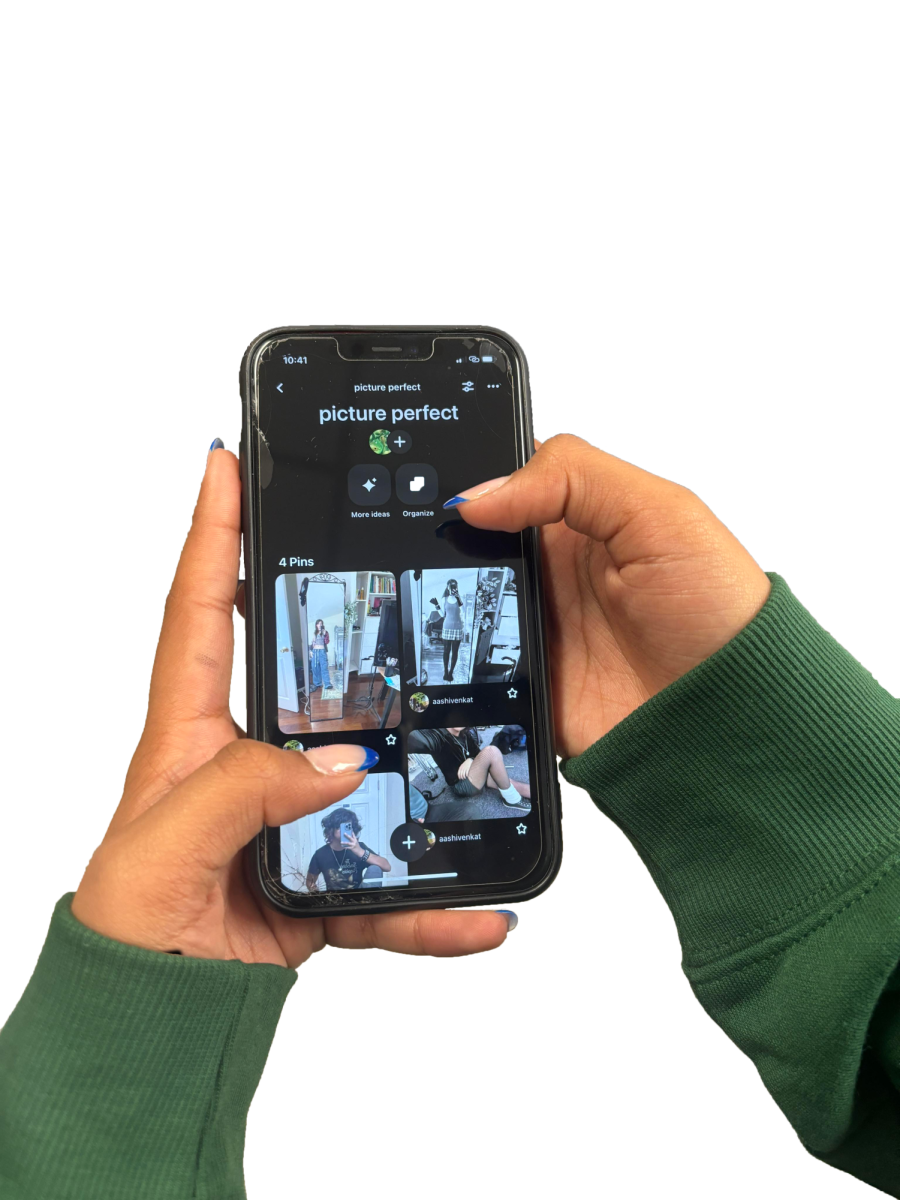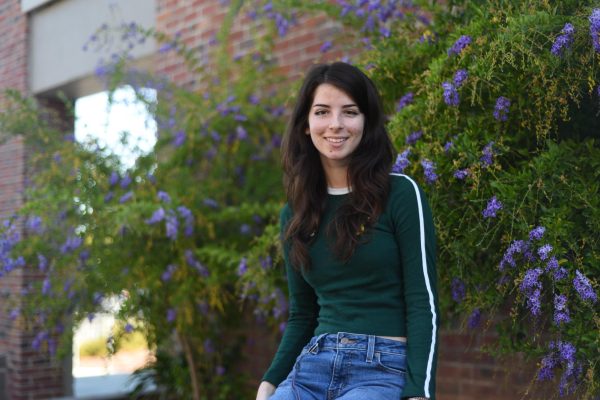Putting on their third set of clothes of the hour, senior Amy Zhang stood in front of the mirror and admired their outfit, making sure their accessories matched the rest of their ensemble. During the pandemic in his freshman year, Zhang often spent his time buying clothes to hold dress-up shows in his room. In particular, he was interested in a soft aesthetic involving pastels and shades of pink. She says that she finally discovered her current aesthetic in the time between the end of her junior year and the start of her senior year.
Zhang’s style changes from day to day, but they are currently influenced by the Acubi aesthetic — a gray, white and black color tone with a primary focus on silhouettes. He emphasizes the effect of the outline of the clothes on the overall look of the outfit.
“Another aesthetic that I was pretty interested in for a while and that I still am interested in is streetwear and the way that it overlaps with cyberpunk or warcore outfits, which also has a lot to do with the silhouette,” Zhang said. “That’s especially because, for warcore, you dress in basically all black, so the only way for your outfit to look good is by what you’re wearing and not the color of what you’re wearing. So I think fashion has a lot to do with the silhouette and then with the accessories.”
Quarantine was also a time of exploration for sophomore Rafael Bañes, who says that the year in isolation provided him the time to experiment with different styles. In particular, he describes how various social media platforms sparked his initial interest in discovering his sense of style.
“I had both Pinterest and TikTok when the indie kid aesthetic came out, and I thought it was pretty cool because of all the colors,” Bañes said. “I started looking more into this concept of fashion, and later on, it wasn’t just the indie kid aesthetic — it also shifted to me looking into other aesthetics before I found out what I really liked.”
Similarly, sophomore Alex Sharma uses Pinterest as a source of style inspiration, especially for vintage styles. When taking inspiration from mood boards and other content, however, Sharma says they may change aspects of the style to fit their aesthetic.
“I am, unfortunately, a chronic Pinterest user, so I’m just forever on Pinterest,” Sharma said. “A lot of the style I get is from Pinterest, like Y2K and emo. I look into those subcultures and then dress how a lot of these subcultures dress. Goths typically wear a lot of heavy black makeup, but I don’t wear a lot of makeup — I just wear big eyeliner. I also took inspiration from the patchwork of punk.”
Aside from social media, Zhang says that a lot of the clothes they wear are based on other forms of media they consume. She notes that K-pop idol styling influences her over-accessorizing and overall style and that she takes bits and pieces of inspiration from Japanese animated fashion to add to her aesthetic.
“In Japanese animated fashion, it’s not about the accessories at all — it’s too labor-intensive to animate a complicated outfit,” Zhang said. “To make an outfit memorable, they use solid colors and memorable silhouettes. That’s where tight tops, baggy jeans and asymmetrical cuts also come in. I’m also Chinese, so I do take a lot of inspiration from Chinese fashion. I like getting in touch with my culture by wearing more Chinese-style outfits or incorporating Chinese elements into my clothing. I think you can use fashion as a way to honor your heritage or your interests.”
Like Zhang, Sharma agrees that the media they consume is a major influence on their look, citing characters from TV shows as their inspiration for certain styles. For example, in the show “American Horror Story,” Sharma likes the outfits of characters Tate Langdon and Violet Harmon, so they dress similarly to both characters, similar to a masculine version of Harmon.
According to Bañes, there is a symbiotic relationship between identity and style, as they are constantly changing and impacting each other.
“I feel like if you have a certain aesthetic, then that does affect your identity,” Bañes said.
“What you wear is also how you present yourself and that’s how people see you, so it can play a role in who you hang out with and what you do.”
Although he admits various types of media may affect one’s aesthetic, Zhang says that the most important factor when designing an outfit should be one’s own opinion. According to Zhang, figuring out what types of clothing flatter specific body types and which colors complement one’s skin tone should ultimately be the greatest influence on one’s sense of style.
“I think fashion is one of the primary ways in which teenagers or younger people can express or find their identity,” Zhang said. “Everyone knows [you feel confident] when you’re wearing clothes that you feel good in, and I think that it’s important for teenagers to nurture a sense of self-worth through their clothes. I think fashion is a way for people to express their identity, and also a way for people to discover their identity because they can figure out whether or not they like the way they look.”












